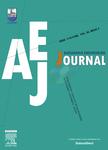版权所有:内蒙古大学图书馆 技术提供:维普资讯• 智图
内蒙古自治区呼和浩特市赛罕区大学西街235号 邮编: 010021

作者机构:Duy Tan Univ Fac Informat Technol Da Nang 550000 Vietnam Duy Tan Univ Inst Res & Dev Da Nang 550000 Vietnam Natl Econ Univ Coll Technol Fac Data Sci & Artificial Intelligence DATCOM Lab Hanoi 12116 Vietnam Univ Luxembourg Interdisciplinary Ctr Secur Reliabil & Trust SnT L-4365 Esch sur Alzette Luxembourg Quang Tri Coll Dept Informat Technol Quang Tri 520000 Vietnam Khon Kaen Univ Coll Comp Appl Network Technol ANT Khon Kaen 40002 Thailand Duy Tan Univ Fac Elect Elect Engn Da Nang 550000 Vietnam Norwegian Univ Sci & Technol Fac Informat Technol & Elect Engn NTNU N-7491 Trondheim Norway UiT The Arctic Univ Norway Fac Engn Sci & Technol N-8514 Narvik Norway
出 版 物:《ALEXANDRIA ENGINEERING JOURNAL》 (亚历山大工程杂志)
年 卷 期:2024年第107卷
页 面:559-567页
核心收录:
学科分类:12[管理学] 1201[管理学-管理科学与工程(可授管理学、工学学位)] 08[工学]
基 金:Norwegian University of Science and Technology (NTNU) Duy Tan University
主 题:Hybrid TS/PS Cooperative NOMA Outage probability UAV Bat algorithm optimization
摘 要:This study examines a cooperative non-orthogonal multiple access (NOMA) network utilizing an energy- constrained unmanned aerial vehicle (UAV) relay (UAVR) to expand coverage and improve network throughput. In order to provide energy to the UAVR, we consider the hybrid simultaneous wireless information and power transmission (SWIPT) method, which allows the UAVR to harvest energy from the source (i.e., sink node) signal. Herein, a hybrid time switching (TS)-based and power splitting (PS)-based relaying scheme is applied to improve the UAVR s energy harvesting (EH) efficiency and the system performance. Given this context, we derive the closed-form expression of the outage probability (OP) for the sensors to evaluate the network performance. Based on the achieved analytical results, we apply the bat algorithm optimization (BAO) method to determine the optimal working point (as a fraction of received power and power allocation coefficients, and the 3-D positions of the UAVR) for the system such that the OP is minimized. The numerical analysis indicates that BAO is effective in both exploring and exploiting solutions, making it a suitable choice for similar non-convex optimization problems in continuous search spaces for cooperative NOMA IoT networks.